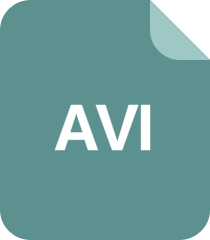

摘 要
课程题库管理系统旨在实现题库的无纸化管理,基于计算机和网络技术进行
在线题库管理系统的使用,既方便对历史题目的管理,也方便试卷的制作,尤其
适合大中型高校对题库的管理和试卷的制作。
基于现代教育的推广和考试需求的增加,本文设计并实现了一套在线题库系
统。本系统实现了用户登入、用户管理、单选题管理、填空题管理、问答题管理、
题目查询、试卷制定等基本功能。系统采用 C/S 开发模式,以 JAVA 作为开发平
台,结合 JAVA 等语言,以 SQL Server 2005 为后台数据库。整个系统层次结构简
单,操作容易,并具备一定的安全性。用户借助此系统,可以随时随地的进行题
库的管理,同样,可以快捷的制定出试卷。
关键词:课程题库管理系统;C/S 模式;JAVA

Abstract
Course examination management system to achieve paperless management
database, the use of online question bank management system based on the computer
and network technology, which is convenient for the historical topic management,
convenient manufacture paper, especially suitable for large and medium-sized
production the question bank management and test paper.
The increase in modern education and examination based on demand, the paper
designs and implements a set of online item bank system. This system realizes the
user login, user management, data management, fill in the blank in the management,
management, query, question and answer question paper making and other basic
functions. System uses the C/S development model, using JAVA as a development
platform, combined with JAVA language, using SQL Server 2005 as the background
database. The system structure is simple, easy to operate, and has certain safety. With
this system, users can whenever and wherever possible, the question bank
management, also, can quickly make the papers.
Key words: Course examination management system; C/S pattern; JAVA

目录
1 引言 ....................................................................................................................................................1
1.1 课题背景...................................................................................................................................1
1.2 系统开发的意义.......................................................................................................................1
1.3 国内外研究现状.......................................................................................................................1
2 可行性分析 ........................................................................................................................................3
2.1 社会可行性...............................................................................................................................3
2.2 技术可行性...............................................................................................................................3
2.3 操作可行性...............................................................................................................................3
2.4 系统的技术介绍.......................................................................................................................4
2.4.1 JAVA
介绍
........................................................................................................................4
2.4.2 MVC
介绍
........................................................................................................................4
2.4.3 SQLserver
介绍
................................................................................................................6
2.4.4 JDBC
介绍
.......................................................................................................................6
2.5 系统运行环境 ...........................................................................................................................7
3 需求分析 ............................................................................................................................................8
3.1 系统需求...................................................................................................................................8
3.2 功能需求分析...........................................................................................................................8
4 系统总体设计 ....................................................................................................................................9
4.1 设计思想...................................................................................................................................9
4.2 系统模块结构图.......................................................................................................................9
4.3 系统流程图...............................................................................................................................9
4.4 数据字典.................................................................................................................................10
5 系统详细设计与实现 ......................................................................................................................13
5.1 数据库连接.............................................................................................................................13
5.2 登入设计.................................................................................................................................13
5.3 用户管理设计.........................................................................................................................13
5.4 课程添加设计.........................................................................................................................14
5.5 试题添加设计.........................................................................................................................15
5.6 功能模块设计.........................................................................................................................15
6 系统测试 ..........................................................................................................................................16
6.1 测试目的与目标.....................................................................................................................16
6.2 测试方法.................................................................................................................................16

6.3 测试结论.................................................................................................................................17
结 论................................................................................................................................................18
参考文献 .................................................................................................................................................19
致 谢..................................................................................................................................................20





















